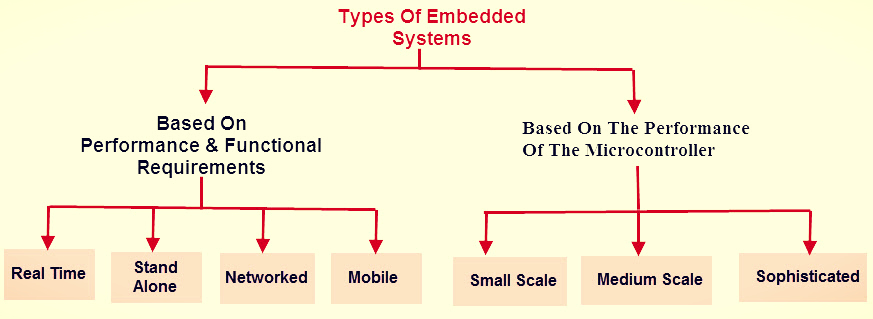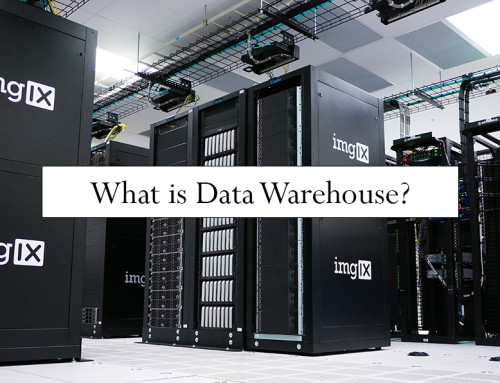What is an embedded system
Embedded systems are systems which are dedicated to performing some specific and dedicated tasks. Most of the devices we use today are examples of embedded systems. 98% of microprocessors are made for embedded systems. They are found in the washing machine, AC, mobiles, toys etc. Washing machine microprocessor can only do a specific task and cannot do other tasks.
Hardware and software are combined together to perform some tasks. It is the same as the computer system but computers are used for general purpose and have more processing power. Embedded systems have low processing power as compared to a personal computer. Embedded systems can handle a limited amount of data as compared to computer systems.
Embedded systems have a microcontroller which gets input from hardware like keypad, buttons or any sensor and gives output through motor, display or any mechanical work. These systems can have external memory also which store nonvolatile data. External memory sometimes builds internal into the microcontroller. The microcontroller can be written in any programming language like C language, assembly language or any complex language. The program is loaded into the microcontroller. A program written for the microcontroller of the calculator cannot work with microwave and vice versa. Program instructions written for embedded systems are known as firmware. Firmware is stored in read-only or flash memory and is small in size. Embedded systems can have little memory and may or may not have keyboard and screen.
Embedded systems consume low power to run microcontroller. They are also of small size in terms of other systems. They have a low cost per unit because of low computing power. It is difficult to program to embed systems and they use intelligent code to operate. When engineers are given the project to design an embedded system then they are guided to make the cost-effective system and reducing the size of the system. Embedded systems are usually made on a large scale so the consumers can get a low price product. The architecture of large machinery is complex and difficult to make. So engineers face difficulty in controlling the accuracy and efficiency of the system. The goal is to make application programs that are more in performance and error-free.
Let us discuss some history about embedded systems. First embedded computer systems were made in 1969 and were named as Apollo guidance computer. This embedded system was made by MIT laboratory. The purpose of this system to reduce size and weight. Size and weight were reduced by using integrated monolithic circuits. Another embedded system that was made in old days was named as Autonetics D-17 guidance system. This system was used in Minuteman missiles in 1961. This system was then replaced by a computer that used integrated circuits.
Many applications of embedded systems are used nowadays. They are used in automobiles, industrial areas, medical science, cooking, commercial areas and in the military. Embedded systems are also used in telecommunication sector including mobiles, routers, and switches. Other applications of embedded systems are video games consoles, mp3 players, printers, GPS receivers, dishwashers, thermostats, Anti-lock banking system, medical imaging etc.
Some embedded systems are designed to give a real-time performance like thermometer while others are designed to give a low performance. Embedded systems are not always standalone but build as a subpart of the large system. For example mp3 player, AC, and the speed meter of the car.
Types of embedded system
Real-time embedded system:
Real-time systems are those which give a quick response to critical situations. They are used in military, medical and industrial applications. Engineers working in these systems have high demand is current days. To develop the real-time embedded system we require timing analysis, multitasking design, debugging, cross-platform testing and architecture design. In these systems, quick response is very important. Better hardware is also used in these systems to avoid failure in performance. Real-time systems control the external environment by input & output interfaces and sensors. The external environment includes human and other animals. Some examples of real-time embedded systems include:-
- Controlling heat, elevators, lights, and doors in buildings
- Robots
- Traffic control system including railway tracks, airspace, shipping lines, highways
- Radio, satellite and telephone communication
- Patient monitoring system
- Radiation therapy system in the hospital
- Computer games
- Multimedia systems which consist of video, audio, text and graphics interfaces
- Military usage that includes tracking, weapons, and command & control
Standalone embedded system:
This type of embedded system works for itself as a device without needing any interconnected computer. It can take data in the form of analog or digital signals. This system first process data and then outputs data by displaying on the screen. It can also output data to any attached device. Examples of standalone embedded systems include:-
- Microwave ovens
- Digital cameras
- Mp3 players
- Video game consoles
- Temperature measurement systems
Networked embedded system:
Networked embedded systems are those systems which are connected to the network to give output to the attached resources. The devices in the networked embedded system are connected to the network with network interfaces. The network can be either a local area network (LAN) or a wide area network (WAN). The connection in networked embedded systems can be wireless or wired. This embedded system is fast and emerging its popularity over days. The embedded web server is that which is connected to network devices and is controlled by the web browser also. Example of this is the office security system. In office security system, different sensors (light sensors, smoke sensors or motion detectors) are networked together through LAN and controlled over the WAN (internet).
Mobile embedded system:
Mobile embedded systems are limited in resources including memory. Examples of mobile embedded systems include:-
- Personal digital assistants (PDA)
- Cellular phones
- Mp3 players
- Digital cameras,
Small-scale embedded system:
Small-scale embedded systems consist of 8-16 bit microcontroller. This system can perform tasks at a small level. They have on-chip ROM and RAM. Small-scale systems can be even activated by the battery. The tools used to develop small-scale embedded systems are an editor, cross assembler, assembler and integrated development environment (IDE). The purpose of this system is not computation but to control as a computer embedded inside it. It behaves as a component of a computer and its function is not to compute. The small-scale system is dedicated to some specific task. To apply for the job as a small-scale embedded designer you need skills including data communication, digital electronic design, control engineering, software engineering, computer architecture, motors & actuators, analog electronic design, sensors & measurement and IC design & measurement.
Medium scale embedded system:
This embedded system has 16-32 bit microprocessor or microcontroller with external RAM and ROM They can perform medium to complex level works. The integration between hardware and software is complex in these embedded systems. Programming languages used to develop medium scale embedded systems include Java, C, Visual C++, debugger, C++, RTOS, simulator, source code engineering tool and IDE. The designer of the medium scale embedded system should also know how to use semaphores, queues, mailboxes, pipes, and sockets. Knowing the application programming interface (API) in the RTOS tool for controlling microcontroller is also necessary.
Sophisticated embedded system:
The embedded system which can do large-scale works with multiple 32-64 bit chips is known as sophisticated embedded systems. They can perform distributed work on a large scale. The complexity of hardware and software is very high in these systems. In sophisticated embedded systems, hardware and software are assembled together on large scale and designing of hardware products is also included in these systems.
Examples of embedded system
Some examples of embedded systems are below:-
- ATM
- Digital Cameras
- Microwave ovens
- Factory controllers
- Washing machine
- Calculator
- TV remote
- Traffic lights
- Digital watches
- Mp3 player
- video games consoles
- Printers
- GPS receivers
- Dishwashers
- Thermostats
- Anti-lock banking system
- Medical imaging





